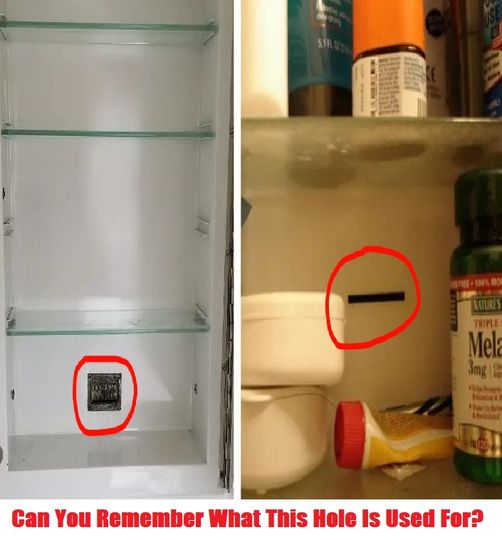For years, my husband and I were involved in flipping houses, and during that time, we uncovered some truly unexpected surprises while tearing down walls and gutting old properties. There’s something thrilling about demolishing a space, never knowing what secrets lie behind those layers of plaster and wood. Among the most memorable discoveries were things like a stash of old bills hidden in a wall — bills that, believe it or not, turned out to have real value today. Another time, we stumbled upon hundreds of antique glass bottles buried beneath the floorboards, likely hidden during the Prohibition era. But there’s one curious feature we’ve encountered in several old homes that I think deserves a deeper dive today.

If you’ve ever lived in, or perhaps visited, a home that’s pushing 100 years old, you might have seen this odd detail I’m about to describe. Picture stepping into a bathroom and noticing an old, built-in medicine cabinet. It’s not uncommon to still see these relics in older homes. But what you might not have noticed — or perhaps you saw it but didn’t understand its purpose — is a small slit on the back wall of the cabinet. It’s not just some random imperfection. This little slot actually had a very specific and practical use back in the day.
To understand why this hole existed, we need to take a little trip back in time, to the days before the invention of stainless steel razor blades in the 1960s. Before then, men used old-fashioned metal razor blades that didn’t last very long. At best, you could get one or two decent shaves out of them before they became too dull to use. In those days, there weren’t disposable razors or convenient cartridge replacements like we have now. Once the blade became dull, it was essentially useless.
Now, imagine the problem of disposing of these sharp blades safely. Tossing them into the trash wasn’t really a great idea, especially in households with kids or pets who could easily get hurt by accidentally touching them. Even adults could end up with a nasty cut if they weren’t careful. So, what was the solution? This is where that mysterious slit in the medicine cabinet comes into play.
Instead of throwing used blades in the trash, where they could become a hidden hazard, men would simply slide the dull blade through the slot in the back of the cabinet. The blade would then drop down into the empty space behind the bathroom wall. And that was it — out of sight, out of mind. There was no need to worry about someone accidentally slicing their fingers because the blades were safely stashed away in an inaccessible spot.
The concept was simple, efficient, and surprisingly effective for its time. But the catch? The blades didn’t just disappear into thin air. They accumulated behind the wall over the years. So, if you’ve ever had the experience of renovating an old bathroom and opened up the wall, only to be greeted by a pile of rusted, ancient razor blades, now you know why they were there. It was all due to this quirky little design feature from a bygone era.
I remember the first time we came across one of these hidden razor blade piles during a renovation project. At first, we were completely puzzled. Why would there be a pile of blades just sitting there behind the wall? But after a bit of research and talking to some older contractors, we learned about this ingenious disposal system. It was like uncovering a little piece of history — one that felt both strange and surprisingly clever.
While it may seem odd today, this method was actually quite practical at the time. Remember, this was an era before modern safety measures and waste disposal systems were common in homes. Razor blades were sharp, and without a safe way to dispose of them, they posed a real hazard. So, the solution was to just let them fall into the wall, where they couldn’t harm anyone.
Of course, by today’s standards, this kind of disposal method feels almost absurd. We have recycling systems, safety containers, and specialized ways to handle sharp objects to prevent injuries. But back then, this was a perfectly logical and efficient way to deal with a household problem.
So, the next time you’re exploring an old house or happen to come across an old-school medicine cabinet with a curious slit in the back, you’ll know exactly what it was for. It’s a small yet fascinating glimpse into how people solved everyday challenges decades ago. It’s these little details that remind us of how much times have changed — and how much they’ve stayed the same.
Who knows? Maybe, in another fifty years, future homeowners will look back at some of our current practices and wonder what on earth we were thinking! History always has a funny way of making the ordinary seem extraordinary with the passage of time.





